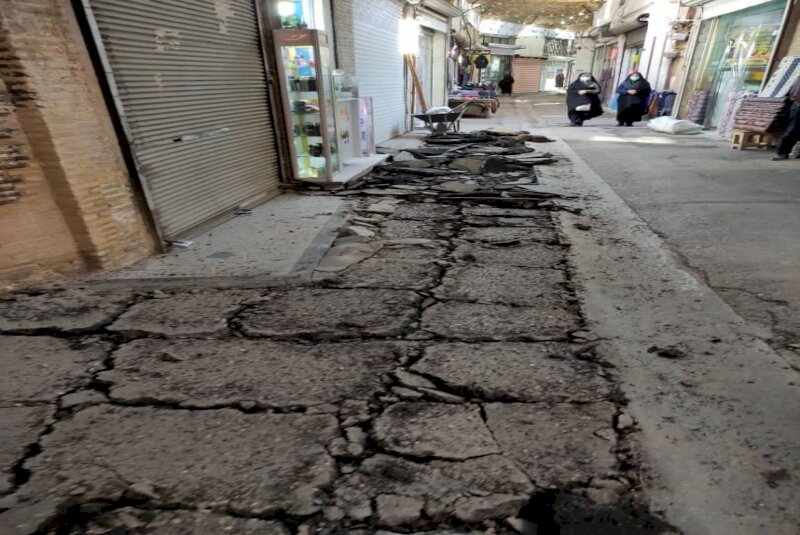Flooring project begins at historical bazaar of Shahrud

TEHRAN –A flooring project has been commenced on parts of the historical bazaar of Shahrud in the north-central province of Semnan, Shahrud’s tourism chief has said.
Over the past decade, the historical structure has undergone several rehabilitation projects, Hamidreza Hassani said on Monday, CHTN reported.
There has been a complete restoration of the bazaar’s rooftop, and work is underway to repair the flooring, the official added.
The Shahrud Bazaar was composed of three caravanserais, two passages, and a public bathhouse, of which only the bathhouse survives, he noted.
The historical structure has been inscribed on the national heritage list.
The main population centers of Semnan province lie along the ancient Silk Road (and modern-day Imam Reza Expressway), linking Rey (Tehran) with Khorasan (Mashhad). While few visitors spend much time in the area, driving through you can easily seek out several well-preserved caravanserais (notably Dehnamak and Ahowan), cisterns (the Cafe Abenbar in Garmsar is a special treat), and ruined mud citadels (Padeh is lumpy but fascinating). The large, bustling cities of Semnan, Damghan, and Shahrud (Bastam) all have a small selection of historic buildings and Semnan has a fine old covered bazaar.
Bazaars in Persian towns
Bazaar is, originally, a public market district of a Persian town. The bazaar of the ancient Islamic world was vividly described in the folktales of “The Thousand and One Nights”. Located in a distinct quarter of a town, it was bustling and noisy by day in contrast to the quiet residential quarters. Access was forbidden after sundown.
Distinctive architecture characterized some bazaars—such as those built at Kashan and Isfahan in Iran in the 17th century. They were usually roofed for protection against the hot desert sun, either with a single roof, with individual vaulted cupolas or domes, or with awnings.
From another point of view, bazaars are also synonyms of foods, with their unmissable colorful stalls of vegetables, herbs, and spices. Yet, most of these ingredients might be mysterious to a foreign eye. Teahouses help punctuate the walk and a traditional restaurant is a perfect place for lunch.
Browsing through a traditional bazaar may provide new experiences and fresh points of view on the ancient land. Such excursions can be made either in person or by “off-the-beaten-track” tours. Not only it’s an opportunity to discover dozens of unique local ingredients, but it’s also a chance to taste street foods and delicacies, in some traditional bakery known only by locals and shopkeepers.
People watching and even mingling with them in the bazaars is one of the best ways to take the pulse of the country. Bazaars have traditionally been major economic and social centers in any Iranian city.
ABU/MG
